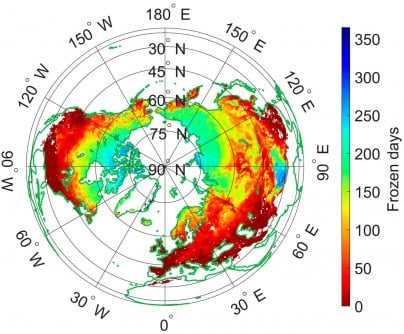Astronomers have released the largest low-frequency radio color image of the Milky Way, providing an expansive view of our galaxy that highlights supernova remnants, stellar nurseries, and pulsars. This remarkable mosaic was constructed using data from the Murchison Widefield Array (MWA) telescope located in Western Australia, merging findings from two extensive surveys known as GaLactic and Extragalactic All-sky MWA (GLEAM) and GLEAM-X (GLEAM eXtended).
According to a statement from the International Centre of Radio Astronomy Research (ICRAR), the new image is not only twice as sharp but also ten times more sensitive and twice as broad as its predecessor released in 2019. The lead author of the study, Silvia Mantovanini, a PhD student at ICRAR’s Curtin University team, expressed excitement about the advancements this image offers. “This vibrant image delivers an unparalleled perspective of our galaxy at low radio frequencies,” she stated.
The research team devoted over 18 months and approximately one million computing hours at the Pawsey Supercomputing Research Centre to process and integrate data from the two surveys, cataloging nearly 100,000 radio sources. The resulting map captures a wide spectrum of radio wavelengths across the Southern Galactic Plane, providing insights into the Milky Way’s hidden structures.
By observing the galaxy in low-frequency radio light, astronomers can penetrate dense clouds of dust and gas that obscure visible wavelengths. This technique reveals supernova remnants, which are vast, expanding shells of gas marking the explosive deaths of stars, as well as regions of ionized gas where new stars are forming. “You can clearly identify remnants of exploded stars, represented by large red circles,” Mantovanini explained. “The smaller blue regions indicate stellar nurseries where new stars are actively forming.”
Significant Discoveries and Future Implications
The newly released image may also enhance our understanding of pulsars—rapidly spinning neutron stars that emit powerful radio pulses and exhibit unpredictable behaviors. The interactive map allows viewers to explore the Southern Galactic Plane, zooming in on the Milky Way’s dynamic stellar activities, glowing nebulae, compact pulsars, and even distant background galaxies.
Co-author Natasha Hurley-Walker, an associate professor at Curtin University, noted the importance of this image for astrophysics. “This low-frequency image allows us to unveil large astrophysical structures in our galaxy that are difficult to image at higher frequencies,” she said. The map represents a significant milestone, as no comprehensive low-frequency radio image of the entire Southern Galactic Plane has been published before.
This groundbreaking work sets the stage for the future of astronomical research, particularly with the upcoming Square Kilometre Array Observatory’s SKA‐Low telescope. Once completed within the next decade, this telescope will investigate the Milky Way and beyond with unprecedented sensitivity and detail, leading to further discoveries in the field.
The findings from this research were published on October 28, 2023, in the Publications of the Astronomical Society of Australia. This innovative image not only enhances our visual understanding of the Milky Way but also paves the way for future explorations into the cosmos.







